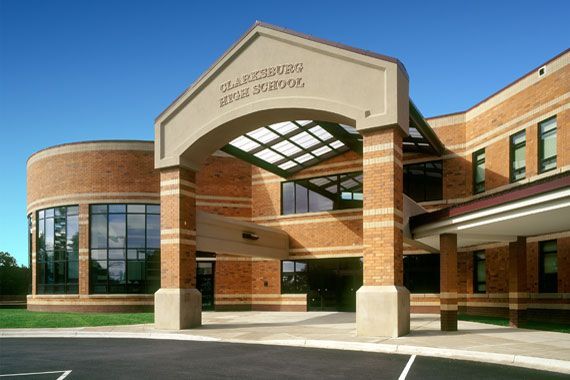If you’re curious about the state of public education in Maryland, you’re in for a treat. Maryland’s public school system has been receiving accolades for its commitment to academic excellence and student success. With a rigorous curriculum, highly qualified teachers, and innovative programs, Maryland’s schools are making a name for themselves as some of the best in the nation. In this article, we will explore the key factors that contribute to the success of Maryland’s public school system and highlight some of the standout achievements of its students. So, buckle up and get ready to learn all about how Maryland is shaping the future of education.
Overview of the Public School System in Maryland
Maryland boasts a long and rich history when it comes to its public school system. With a commitment to providing quality education to all its students, the state has a well-structured and comprehensive system in place. This article will delve into the history, current structure, enrollment rates, and demographics of the public school system in Maryland. Additionally, we will explore the curriculum and academic standards, quality of education, funding and resources, teacher quality and professional development, special education services, technology integration, school safety and security, and extracurricular activities and sports. Finally, we will discuss the challenges faced by Maryland’s public school system and the future outlook for education in the state.
History of the Public School System in Maryland
The public school system in Maryland has a rich history that dates back to the early colonial period. In 1696, the Maryland General Assembly passed a law requiring the establishment of free public schools in every county. This marked the first statewide commitment to public education in the United States. Throughout the years, Maryland has continued to prioritize education, and today, it boasts one of the most highly regarded public school systems in the country.
Current Structure of the Public School System
The public school system in Maryland is structured according to a county-based model. The Maryland State Department of Education oversees the entire system and sets standards and guidelines for curriculum, assessment, and accountability. School districts, also known as local education agencies, are responsible for the day-to-day operations of schools within their jurisdictions. Each county is divided into school zones, and students are assigned to schools based on their residential address.
Enrollment Rates and Demographics
As of the most recent data, the public school system in Maryland serves over 900,000 students across the state. The enrollment rates vary by county, with larger urban areas typically experiencing higher numbers of students. Additionally, Maryland’s public school system is diverse, with students from various racial, ethnic, and socioeconomic backgrounds. This diversity enriches the learning experience and promotes a sense of inclusivity and recognition of different cultures within schools.
Curriculum and Academic Standards
State Curriculum Frameworks
Maryland has implemented a comprehensive state curriculum framework that outlines the content and skills students should master at each grade level. The frameworks are designed to ensure consistency and quality in education across the state. They cover a wide range of subjects, including mathematics, English language arts, science, social studies, and the arts. By establishing clear learning goals and objectives, the state curriculum frameworks provide a roadmap for teachers to plan their lessons effectively.
Assessment and Accountability
To measure student progress and ensure accountability, Maryland implements various assessments throughout the school year. Standardized tests, such as the Partnership for Assessment of Readiness for College and Careers (PARCC) and the Maryland School Assessment (MSA), are used to assess student performance. Additionally, schools are required to report data on student achievement, attendance rates, and graduation rates. This data is used to identify areas for improvement and allocate resources appropriately.
College and Career Readiness
Preparing students for success beyond high school is a top priority in Maryland’s public school system. The state has implemented college and career readiness standards that focus on developing students’ critical thinking, problem-solving, and communication skills. These standards aim to equip students with the necessary knowledge and abilities to excel in college, careers, and everyday life. Furthermore, Maryland offers a variety of programs and resources to support students as they explore post-secondary options. These include college counseling, career fairs, and partnerships with local businesses and institutions.
Quality of Education
Standardized Test Scores
Standardized test scores are often used as a measure of the quality of education in a school system. In Maryland, student performance on tests such as PARCC and MSA is regularly analyzed to assess the effectiveness of instruction and curriculum. Over the years, Maryland students have consistently performed above the national average on these assessments, indicating a high level of academic achievement.
High School Graduation Rates
Another important indicator of the quality of education is the high school graduation rate. Maryland has made significant strides in this area, with the state’s overall graduation rate steadily increasing in recent years. Efforts to ensure all students are prepared to graduate on time include credit recovery programs, alternative education options, and targeted interventions for struggling students. This commitment to supporting student success has resulted in higher graduation rates and increased opportunities for Maryland’s youth.
College Acceptance Rates
Maryland’s public school system prides itself on preparing students for post-secondary education. As a result, a high percentage of Maryland’s public school graduates go on to attend college. The state has numerous partnerships with colleges and universities, providing students with opportunities for early college enrollment, dual credit courses, and scholarship programs. These initiatives play a significant role in promoting college access and ensuring that Maryland students have the necessary tools to pursue higher education.
Funding and Resources
Financing of Public Schools
Funding for public schools in Maryland comes from a combination of state, local, and federal sources. The state government allocates funds based on a funding formula that takes into account factors such as student enrollment, special education needs, and poverty rates. Local governments also contribute to school funding through property taxes and other revenue sources. Additionally, federal funding is provided through programs such as Title I, which supports schools with high percentages of students from low-income families.
Allocation of Resources
The equitable distribution of resources is a key focus in Maryland’s public school system. Schools with higher levels of student need, such as those serving low-income communities, receive additional funding to ensure they can provide the necessary supports and interventions. This approach helps to level the playing field and ensures that all students have access to a quality education, regardless of their socioeconomic status.
Equity and Adequacy of Funding
While efforts have been made to address equity in school funding, challenges remain. Disparities in funding between wealthy and less affluent districts continue to exist, leading to inequities in resources and opportunities for students. Additionally, some stakeholders argue that overall funding levels are inadequate to meet the needs of Maryland’s diverse student population. Ongoing discussions and advocacy aim to address these challenges and ensure that all students receive the resources they need to succeed academically.
Teacher Quality and Professional Development
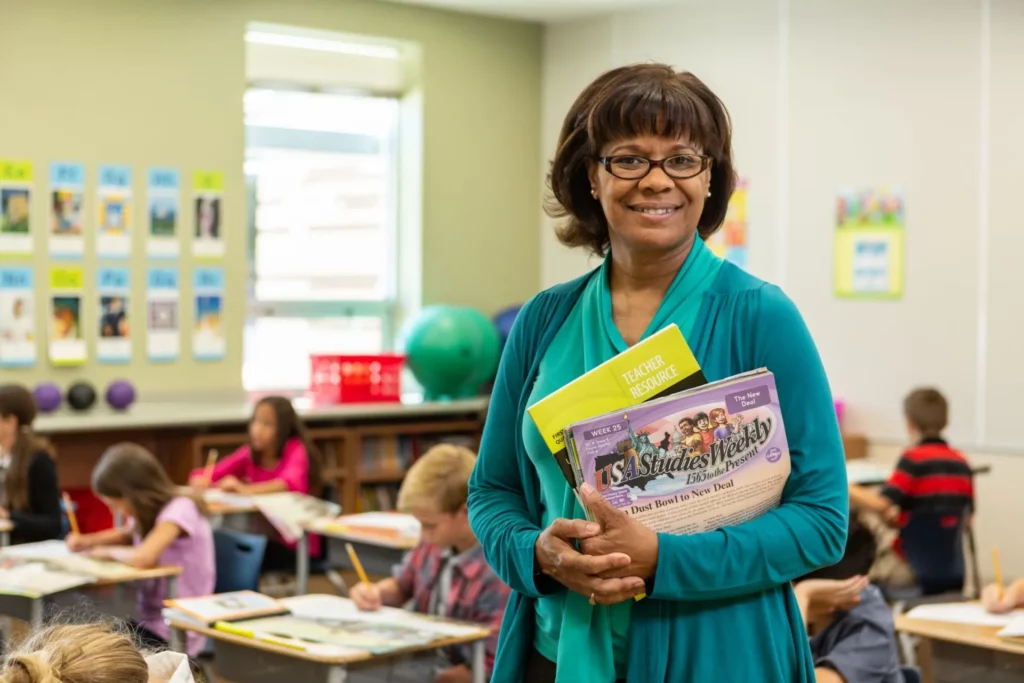
Teacher Certification and Recruitment
Maryland has established rigorous standards for teacher certification to ensure that educators are well-prepared and qualified to lead classrooms. Prospective teachers must meet specific requirements, including completing a bachelor’s degree, passing state certification exams, and participating in a teacher preparation program. To attract and retain highly qualified teachers, Maryland offers competitive salaries, career advancement opportunities, and support for professional growth.
Professional Development Opportunities
Ongoing professional development is crucial to ensuring that teachers stay up-to-date with the latest research, methodologies, and best practices in education. Maryland provides numerous professional development opportunities for teachers, including workshops, conferences, and online courses. These opportunities allow educators to deepen their subject knowledge, learn new instructional strategies, and collaborate with their peers to improve their teaching practices.
Teacher-Student Ratios
Maintaining appropriate teacher-student ratios is essential for providing individualized attention and support to students. In Maryland, efforts are made to keep class sizes manageable, particularly in elementary grades where the development of foundational skills is critical. Lower teacher-student ratios allow teachers to better meet the academic and social-emotional needs of their students, leading to improved learning outcomes.
Special Education Services
Inclusion and Individualized Education Programs
Maryland is committed to providing inclusive education for students with disabilities. Schools strive to create classroom environments that support the learning and social experiences of all students. Individualized Education Programs (IEPs) are developed for students with disabilities to ensure that their unique needs are met. These plans outline specific accommodations, modifications, and support services that enable students to succeed academically and thrive in a general education setting.
Support for Students with Disabilities
Maryland’s public school system offers a wide range of services and supports for students with disabilities. These may include specialized instruction, speech therapy, occupational therapy, and counseling services, among others. School staff work collaboratively with parents, teachers, and other professionals to create a supportive and inclusive learning environment that addresses the individual needs of each student. This commitment to inclusivity reflects Maryland’s dedication to ensuring that all students have equal access to a quality education.
Early Intervention Programs
Recognizing the importance of early intervention, Maryland has implemented programs to identify and support students with developmental delays or disabilities at an early age. Early intervention services are provided to infants and toddlers with disabilities or delays in their physical, cognitive, communication, social-emotional, or adaptive development. By intervening early, Maryland aims to minimize the impact of disabilities and maximize students’ potential for success in school and beyond.
Technology Integration
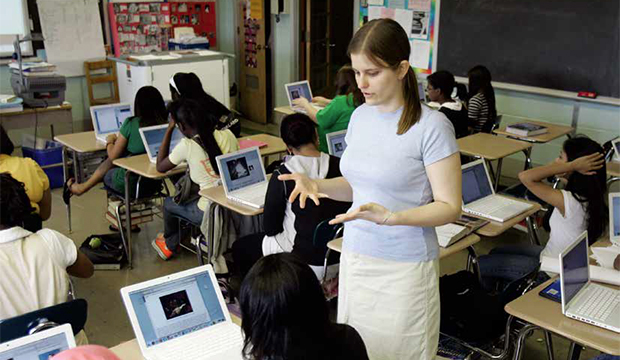
Access to Technology
In an increasingly digitized world, access to technology is crucial for student success. Maryland is committed to ensuring that students have access to technology both at school and at home. Many schools in the state have implemented one-to-one device initiatives, providing students with individual devices that facilitate learning and enhance their digital literacy skills. Additionally, efforts have been made to bridge the digital divide by providing internet access to students in low-income communities.
Online Learning Opportunities
Maryland recognizes the value of online learning as a means to expand educational opportunities and cater to diverse student needs. Virtual learning programs and online courses are available to students across the state, allowing for flexibility and personalized learning experiences. These online opportunities enable students to pursue advanced coursework, explore specific interests, and access resources and instruction that may not be available at their local schools.
Digital Literacy Initiatives
To prepare students for the challenges and opportunities of the digital age, Maryland has implemented digital literacy initiatives. These initiatives focus on teaching students essential skills such as information literacy, online safety, responsible digital citizenship, and effective use of technology for learning. By equipping students with these skills, Maryland aims to foster critical thinking, creativity, and collaboration in a technology-driven society.
School Safety and Security
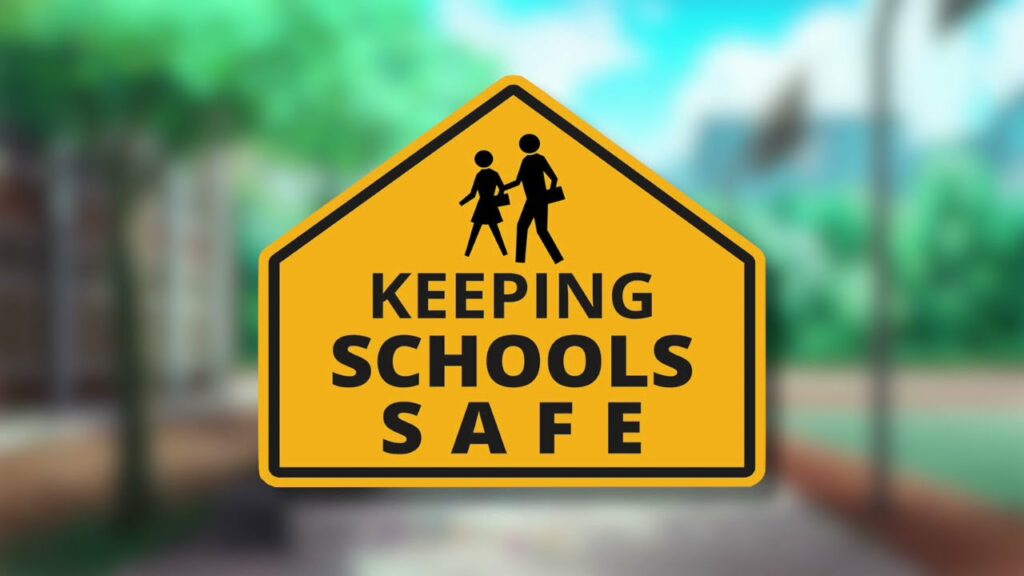
Safety Measures and Protocols
Ensuring the safety and security of students and staff is a top priority in Maryland’s public schools. Schools have implemented comprehensive safety measures and protocols to prevent and respond to emergencies. These may include the presence of school resource officers or security personnel, surveillance cameras, visitor check-in procedures, and regular safety drills. Additionally, schools collaborate with local law enforcement agencies to develop and maintain effective emergency response plans.
Emergency Response Plans
Maryland’s public school system prioritizes effective emergency response planning to mitigate risks and protect students and staff in the event of a crisis. Emergency response plans outline clear procedures for various scenarios, such as natural disasters, lockdowns, and evacuations. Regular drills and training sessions are conducted to ensure that all individuals in the school community are familiar with emergency protocols and can act quickly and appropriately when necessary.
Anti-Bullying Programs
Creating a safe and inclusive learning environment is paramount in Maryland’s public schools. Anti-bullying programs and initiatives are implemented to prevent and address bullying behaviors. These programs focus on promoting empathy, fostering positive relationships, and teaching conflict resolution skills. Schools also provide resources and support for students who experience bullying, ensuring that appropriate interventions are implemented to address the issue effectively.
Extracurricular Activities and Sports

Availability of Extracurricular Programs
Extracurricular activities play a crucial role in the overall development of students. Maryland’s public schools offer a wide array of extracurricular programs, including clubs, organizations, and after-school activities. These programs provide students with opportunities to pursue their interests, develop leadership and teamwork skills, and engage in activities that enhance their physical, social, and emotional well-being. By participating in extracurricular activities, students can explore their passions and cultivate their talents outside of the traditional academic setting.
Sports Offered in Maryland Schools
Sports are an integral part of the extracurricular landscape in Maryland schools. The state offers a diverse range of sporting opportunities, including traditional sports such as football, basketball, and soccer, as well as lesser-known sports like lacrosse and field hockey. Maryland’s schools are known for their athletic excellence, with many teams achieving commendable results at the state and national levels. Participation in sports not only promotes physical fitness but also instills valuable life skills such as discipline, teamwork, and perseverance.
Importance of Extracurricular Activities
Extracurricular activities are an essential component of a well-rounded education. Through participation in these activities, students have the opportunity to explore their interests, develop new skills, and build relationships with peers and adult mentors. Research has shown that involvement in extracurricular activities is strongly associated with improved academic performance, higher self-esteem, and enhanced leadership abilities. Thus, Maryland’s commitment to providing a robust offering of extracurricular programs reflects its dedication to fostering the holistic development of its students.
Challenges and Future Outlook
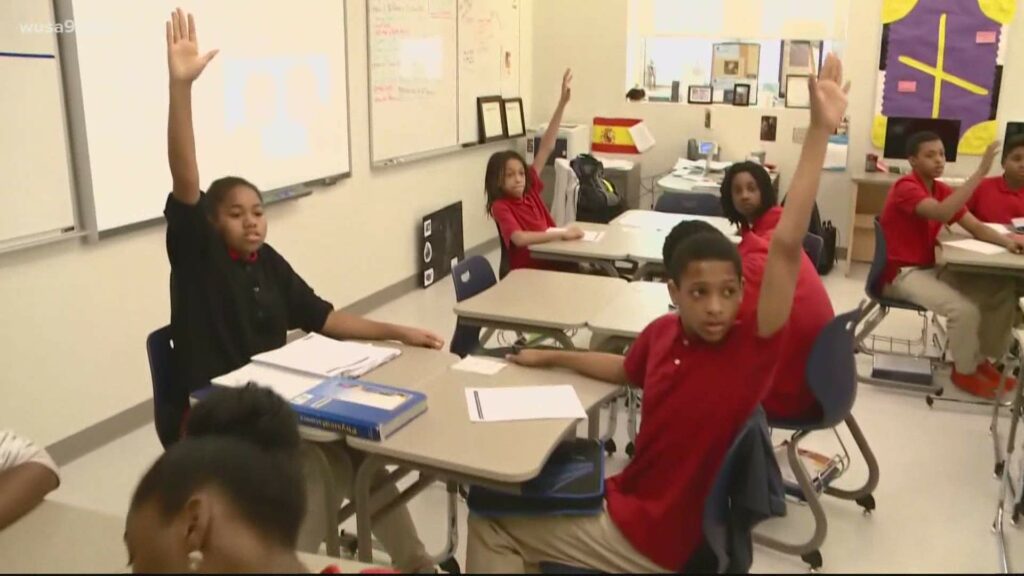
Achievement Gap
Despite Maryland’s efforts to provide an equitable education system, there remain significant achievement gaps among different student subgroups. Factors such as socioeconomic status, race, and English language proficiency continue to influence educational outcomes. Closing the achievement gap is a complex challenge that requires targeted interventions, increased resources, and ongoing commitment from all stakeholders. Maryland is actively working towards addressing this issue by implementing targeted programs and policies to ensure that all students have equal opportunities to succeed.
Teacher Shortages
Like many other states, Maryland is facing a shortage of teachers, particularly in certain subject areas such as math, science, and special education. To address this challenge, the state has implemented recruitment initiatives, such as loan forgiveness programs and incentives for alternative certification routes. Additionally, efforts are being made to improve teacher retention through mentoring programs, professional development opportunities, and competitive compensation packages. While progress has been made, continued focus on attracting and retaining high-quality educators will be crucial for the future success of Maryland’s public school system.
Education Reform Initiatives
Maryland is actively engaged in education reform initiatives to improve the quality of education and enhance student outcomes. These initiatives aim to address the challenges faced by the public school system and ensure that all students have access to a high-quality education. Efforts include revising curriculum frameworks, implementing innovative instructional practices, and advocating for increased funding and resources. By continuously evolving and adapting to the changing needs of students and society, Maryland is positioning itself for a future of educational excellence.
In conclusion, the public school system in Maryland has a strong foundation rooted in history, a commitment to academic excellence, and a focus on providing quality education to all students. The state’s comprehensive curriculum, emphasis on college and career readiness, and commitment to inclusive education contribute to the success of its students. While challenges such as the achievement gap and teacher shortages persist, Maryland’s dedication to continuous improvement and education reform bodes well for the future. With ongoing efforts to address these challenges and provide equitable opportunities for all students, Maryland is poised to continue its legacy as a leader in public education.

